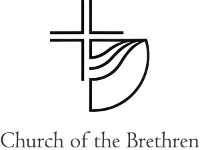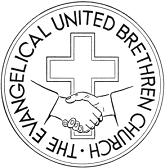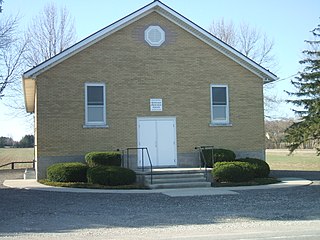
Mennonites are a group of Anabaptist Christian church communities tracing their roots to the Radical Reformation. The name is derived from one of the early prominent leaders of the Anabaptist movement, Menno Simons (1496–1561). Through his writings about Reformed Christianity during the Radical Reformation, Simons articulated and formalized the teachings of earlier Swiss founders, with the early teachings of the Mennonites founded on the belief in both the mission and ministry of Jesus, which the original Anabaptist followers held with great conviction, despite persecution by various Roman Catholic and Mainline Protestant states. Formal Mennonite beliefs were codified in the Dordrecht Confession of Faith in 1632, which affirmed "the baptism of believers only, the washing of the feet as a symbol of servanthood, church discipline, the shunning of the excommunicated, the non-swearing of oaths, marriage within the same church", strict pacifistic physical nonresistance, anti-Catholicism and in general, more emphasis on "true Christianity" involving "being Christian and obeying Christ" as they interpret it from the Holy Bible.

The Church of the Brethren is an Anabaptist Christian denomination in the Schwarzenau Brethren tradition that was organized in 1708 by Alexander Mack in Schwarzenau, Germany during the Radical Pietist revival. The denomination holds the New Testament as its only creed. Historically, the church has taken a strong stance for nonresistance or Christian pacifism—it is one of the three historic peace churches, alongside the Mennonites and Quakers. Distinctive practices include believer's baptism by forward trine immersion; a threefold love feast consisting of feet washing, a fellowship meal, and communion; anointing for healing; and the holy kiss. Its headquarters are in Elgin, Illinois, United States.
The Evangelical Lutheran Church in America (ELCA) is a mainline Protestant Lutheran church headquartered in Chicago, Illinois. The ELCA was officially formed on January 1, 1988, by the merging of three Lutheran church bodies. As of 2021, it has approximately 3.04 million baptized members in 8,724 congregations.

The Evangelical United Brethren Church (EUB) was a North American Protestant denomination from 1946 to 1968 with Arminian theology, roots in the Mennonite and German Reformed, and communities, and close ties to Methodism. It was formed by the merger of the Evangelical Church and the Church of the United Brethren in Christ. The United Brethren and the Evangelical Association had considered merging off and on since the early 19th century because of their common emphasis on holiness and evangelism and their common German heritage. In 1968, the United States section of the EUB merged with the Methodist Church to form the United Methodist Church, while the Canadian section joined the United Church of Canada.

The Brethren in Christ Church (BIC) is a River Brethren Christian denomination. Falling within the Anabaptist tradition of Christianity, the Brethren in Christ Church has roots in the Mennonite church, with influences from the revivals of Radical Pietism and the holiness movement. They have also been known as River Brethren and River Mennonites. The Canadian denomination is called Be In Christ.

The Missionary Church is an evangelical Christian denomination of Anabaptist origins with Wesleyan and Pietist influences.
The Bible Fellowship Church is a conservative pietistic Christian denomination with Mennonite roots centered in the Mid-Atlantic Region. Its mid-century denominational leader Donald T. Kirkwood described the denomination as "reformed in theology, Presbyterian in polity, creedal immersionists."
The Rosedale Network of Churches is a Christian body of Mennonite churches in the Anabaptist tradition. Rosedale Network of Churches was originally formed in 1910 by a group of Amish Mennonites to promote unity while preserving autonomy of the local congregation.

Mennonite Church Canada is a Mennonite denomination in Canada, with head offices in Winnipeg, Manitoba. It is a member of the Mennonite World Conference and the Evangelical Fellowship of Canada.

The Alliance of Mennonite Evangelical Congregations (AMEC) is an association of conservative evangelical Mennonite churches. The organization was officially formed in 2002 over concerns relating to the merger of the Mennonite Church and the General Conference Mennonite Church.
The Fellowship of Evangelical Bible Churches (FEBC) is a small evangelical Christian denomination with an Anabaptist Mennonite heritage. Most of the denomination's approximately 5000 members are in congregations located in the U.S. and Canada.
Amish Mennonites came into existence through reform movements among North American Amish mainly between 1862 and 1878. These Amish moved away from the old Amish traditions and drew near to the Mennonites, becoming Mennonites of Amish origin. Over the decades, most Amish Mennonites groups removed the word "Amish" from the name of their congregations or merged with Mennonite groups.

The General Conference Mennonite Church (GCMC) was a mainline association of Mennonite congregations based in North America from 1860 to 2002. The conference was formed in 1860 when congregations in Iowa invited North American Mennonites to join together in order to pursue common goals such as higher education and mission work. The conference was especially attractive to recent Mennonite and Amish immigrants to North America and expanded considerably when thousands of Russian Mennonites arrived in North America starting in the 1870s. Conference offices were located in Winnipeg, Manitoba and North Newton, Kansas. The conference supported a seminary and several colleges. In the 1990s the conference had 64,431 members in 410 congregations in Canada, the United States and South America. After decades of cooperation with the Mennonite Church, the two groups reorganized into Mennonite Church Canada in 2000 and Mennonite Church USA in 2002.

The Reformed Mennonite Church is an Anabaptist religious denomination that officially separated from the main North American Mennonite body in 1812.
The Fellowship of Evangelical Churches (FEC) is an evangelical body of Christians with an Amish Mennonite heritage that is headquartered in Fort Wayne, Indiana, United States. It contains 60 churches located in Colorado, Idaho, Illinois, Indiana, Kansas, Maine, Michigan, Minnesota, Missouri, Ohio, and Pennsylvania.
Conservative Mennonites include numerous Conservative Anabaptist groups that identify with the theologically conservative element among Mennonite Anabaptist Christian fellowships, but who are not Old Order groups or mainline denominations.

The Weaverland Conference, also called Horning Church or Black-bumper Mennonites, is a Christian denomination of Old Order Mennonites who use cars.
Lancaster Mennonite Conference (LMC) is a historic body of Mennonite churches in the Mid-Atlantic region of the United States, consisting of Pennsylvania, New Jersey, New York, and Maryland. There are also a few conference churches in Delaware, Virginia, and the city of Washington, D.C., as well as two located in Hawaii. The conference was briefly (2002-2015) associated with the newly formed Mennonite Church USA.
The Mennonite Church USA Archives was founded in 2001 under the denominational merger of the (old) Mennonite Church and the General Conference Mennonite Church. Prior to 2001, the two largest Mennonite denominations maintained separate archives: the Archives of the Mennonite Church, located on the Goshen College campus, housed materials pertaining to the (old) Mennonite Church, while the Mennonite Library and Archives on the Bethel College campus held the records of the General Conference Mennonite Church.
The Markham-Waterloo Mennonite Conference (MWMC) is a Canadian, progressive Old Order Mennonite church established in 1939 in Ontario, Canada. It has its roots in the Old Order Mennonite Conference in Markham, Ontario, and in what is now called the Regional Municipality of Waterloo. The Conference adheres to the 1632 Dordrecht Confession of Faith. The Markham-Waterloo Mennonite Conference is in fellowship with two similar car-driving Old Order Mennonite churches: the Weaverland Mennonite Conference and the Ohio-Indiana Mennonite Conference.











